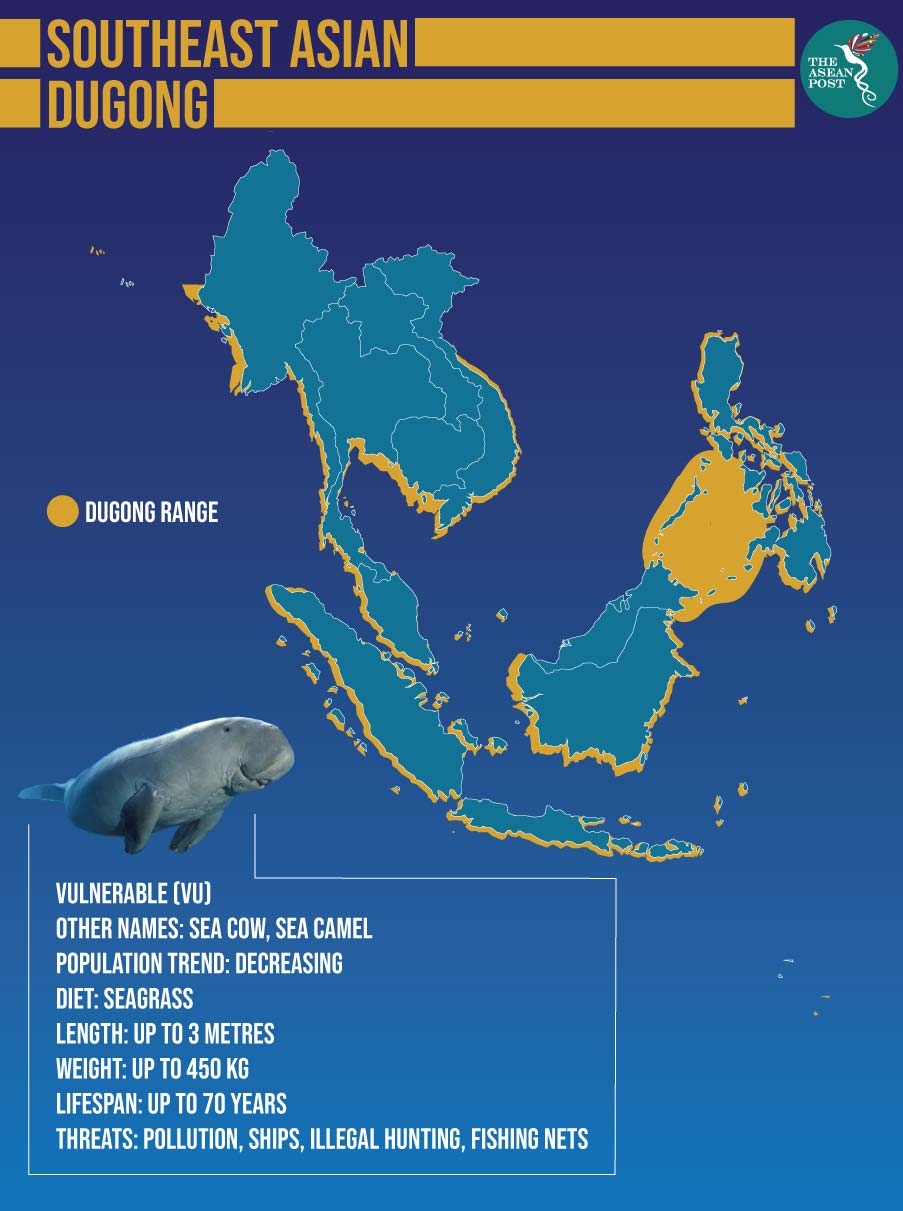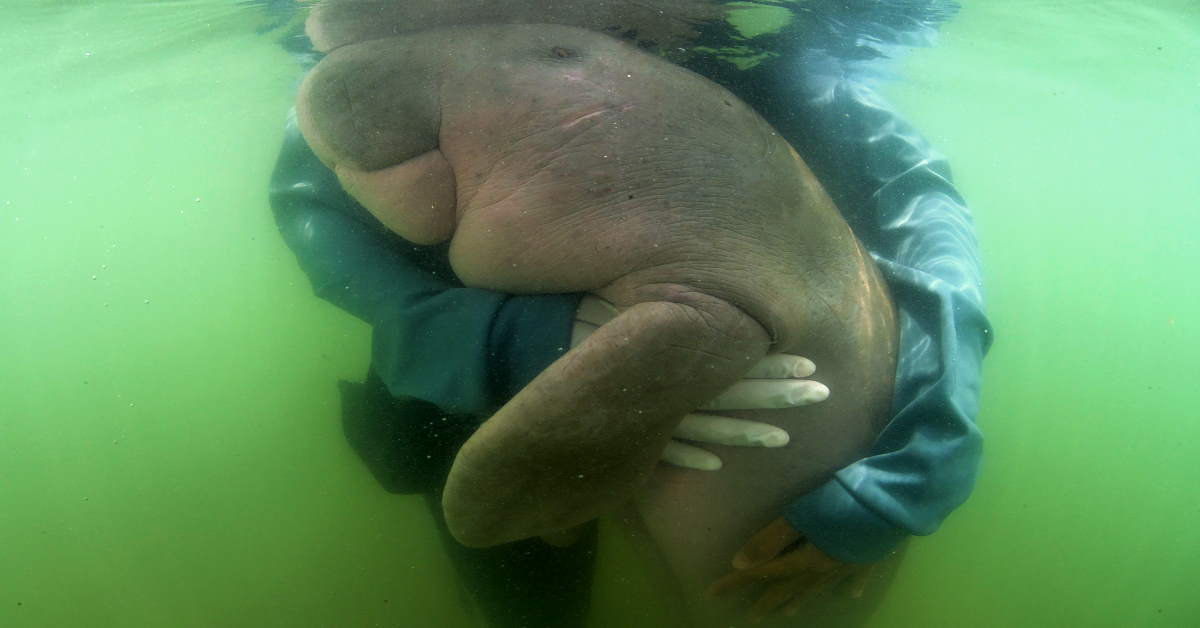In 2019, two baby dugongs were found alive after they washed ashore in Krabi and Trang provinces, in Thailand, but sadly died not long after they were rescued. The event even caught the attention of Hollywood star, Leonardo DiCaprio who posted about it on social media, drawing much needed attention to the plight of Thailand’s endangered dugongs.
The two baby dugongs were taken into care and named, Marium and Yamil by Her Royal Highness Princess Sirivannavari Nariratana Rajakanya. In the local Yawi language of Southern Thailand, the names given to the two dugongs mean ‘lady of the sea’ and ‘handsome man of the sea’, respectively.
Unfortunately, 8-month-old Marium succumbed to an infection that was exacerbated by ingesting marine plastic waste. According to Chaiyapruk Werawong, head of the Trang province marine park, Marium died from a “blood infection and pus in her stomach," adding that small amounts of plastic waste was found in her intestinal tract.
The Department of Marine and Coastal Resources said the three-month-old Yamil died from a blood infection at the Phuket Marine Biological Centre. Thailand's Natural Resources and Environment Minister, Varawut Silpa-arcpha offered a public apology for failing to save Yamil's life.
"We are so sorry, we still don't understand dugongs well enough," he said in a statement.
Prior to the two dugong deaths, seven of these docile mammals were also found dead on Thai beaches in the same year.
Vulnerable to extinction
The International Union for Conservation of Nature (IUCN) Red List of Threatened Species has listed dugongs as vulnerable to extinction on a global scale. Commonly known as "sea cows," dugongs graze peacefully on seagrass in shallow coastal waters. It has a large range in Southeast Asia’s coastal waters.
Human activities such as the destruction and modification of habitat, coastal development, pollution, fishing activities, vessel strikes, unsustainable hunting or poaching and tourism, have threatened the mammals’ ecosystem.

Universiti Malaysia Sabah’s (UMS) Borneo Marine Research Institute (BMRI) director, Professor Dr Rossita Shapawi said that the accelerating loss of seagrass beds is the most important factor behind the dwindling dugong populations in Sabah and Malaysia in general.
“Dugongs feed exclusively on seagrass, especially young shoots and roots. Excessive sedimentation due to uncontrolled anthropogenic activities mainly due to coastal development will smother the seagrass bed,” she said. This is the main cause of the dugong’s disappearing habitat and food source. Dugongs are the world’s only vegetarian marine mammal and can consume up to 40 kilograms (kg) of seagrass a day.
Seagrass, dubbed ‘Flowers of the Ocean’, are unique flowering plants that have evolved to live in marine habitats. Although seagrasses account for less than 0.2 percent of all plant life the world’s oceans, they’re responsible for 10 percent of the carbon stored in oceans annually, and they are up to 35 times far more efficient at sequestering carbon than the rainforest. Southeast Asia has the highest diversity of seagrass species.
Unfortunately, the region also has the highest proportion of declining seagrass sites.
‘Marium Action’
In 2007, the Memorandum of Understanding (MoU) on the Conservation and Management of Dugongs and their Habitats throughout their Range (Dugong MoU) entered into effect in Abu Dhabi, United Arab Emirates. The MoU, guided by a Conservation and Management Plan (CMP), aims to promote internationally coordinated actions to ensure the long-term survival of dugongs and their seagrass habitats throughout their extensive range.
In Malaysia, dugongs are an endangered species with only 40 to 50 left off the coast of the southern state of Johor. While Malaysia did prepare a National Plan of Action for Conservation and Management of Dugong in 2011, and although dugongs are protected under other national and international legislation, to date there are no specific reserves or guidelines for dugong and seagrass protection.
In Thailand, after the death of Marium, the Ministry of Natural Resources and Environment announced a national dugong conservation master plan dubbed the ‘Marium Action’.
One of the plans, the ‘1+11 Dugong Project’ is to create 12 dugong conservation zones modelled after Koh Libong in Trang province, where Marium was cared for. Amid the unprecedented death rate of dugongs, fisherfolk in Trang province have come up with measures to save the endangered sea animals.
The proposed measures include banning the use of destructive fishing gear within three kilometres (km) of the Trang coast, with the help of the coastal patrol. According to Thon Thamrongnawasawat, vice dean of the Faculty of Fisheries at Kasetsart University, destructive fishing gear account for 90 percent of dugong deaths.
Local fisherfolk have made remarkable efforts to protect dugongs. The best example comes from Koh Libong, Thailand's largest dugong sanctuary with 200 out of the 250 dugongs in the country, living in the area. But the threat of plastic pollution still looms large.
Plastic trash
Plastic trash in oceans, on beaches and inside dead birds and marine animals, have sparked outrage, with environmental activists calling for stricter action to deal with the environmental hazard.
Following Marium’s death, Thailand’s Prime Minister Prayut Chan-o-cha, called on all Thais to help the government achieve its goal of keeping the seas clean of plastic. Under the Plastic Waste Management Road Map 2018-2030, Thailand will no longer produce three types of plastic – microbeads, cap seals and oxo-degradable plastics.
Minister Varawut said Marium's death saddens the whole country and people across the globe. "Her death will remind Thais and people all over the world not to dispose of trash into the oceans."
A day after the announcement of the Marium Project, another dugong body was found in Krabi – making it the 16th dugong death. Until a problem-solving approach is taken to look into the main causes of dugong deaths, Southeast Asia’s noble marine mammals will never really be 100 percent safe.
Related articles:
